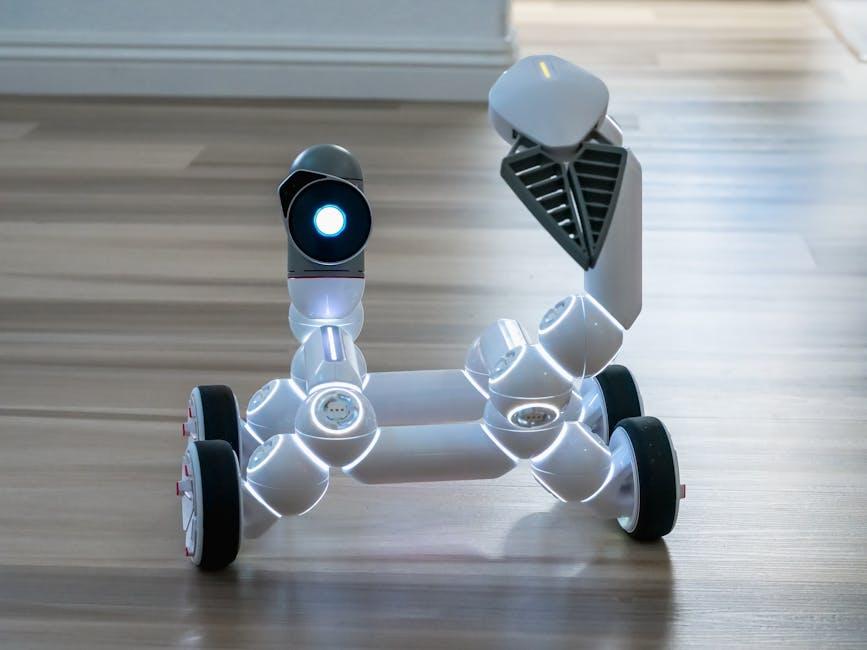In the quiet hum of a morning routine, as lights brighten and coffee brews with a simple voice command, the promise of AI in smart homes unfolds-a symphony of convenience orchestrated by invisible algorithms. Yet, behind this seamless ease lies a complex dance between comfort and caution. As our living spaces grow smarter, the question emerges: how much privacy are we willing to trade for convenience? This article delves into the delicate balance of AI’s role in smart homes, exploring the innovative benefits alongside the privacy challenges that quietly shape our digital sanctuaries.
The Rise of Intelligent Assistants and Everyday Convenience

Intelligent assistants have swiftly woven themselves into the fabric of modern living, transforming everyday tasks into seamless experiences. From adjusting room temperatures to curating personalized shopping lists, these AI-powered companions offer unparalleled convenience. Users can control lighting with voice commands, monitor security cameras in real-time, or even receive proactive reminders, redefining how we interact with our homes. This constant connectivity empowers individuals to save time and focus on what truly matters, bringing smart homes closer to the ideal of effortless comfort.
Yet, this ease comes with its own set of challenges. The integration of intelligent assistants raises critical questions about data security and personal privacy. Consider these aspects when embracing AI technology at home:
- Data Collection: What personal information is being gathered and how it is stored.
- Third-party Access: Who has permission to access your home’s AI data ecosystem.
- Device Vulnerability: Risks of hacking and unauthorized control over connected devices.
| Feature | Convenience | Privacy Concern |
|---|---|---|
| Voice Recognition | Hands-free control | Potential for always-on listening |
| Automated Scheduling | Custom routines | Data profiling risks |
| Remote Monitoring | Enhanced security | Susceptible to hacking |
Navigating Data Collection and User Privacy Concerns

In the rapidly evolving landscape of smart homes, collecting user data has become a cornerstone for delivering personalized experiences. Devices such as voice assistants, smart thermostats, and security cameras gather continuous streams of information, from daily habits to environmental preferences. However, this wealth of data collection raises inevitable questions about how much information is too much and who ultimately controls it. The challenge lies in crafting systems that both respect users’ right to privacy and harness data to enhance convenience. Transparency is key: users should be fully informed about what data is being collected, how it’s stored, and for what purposes it’s used.
To navigate this delicate balance, smart home manufacturers often implement privacy features designed to empower users. These include:
- Data minimization: collecting only the essential information to operate devices effectively.
- Local processing: analyzing data directly within the home to reduce cloud exposure.
- User consent controls: easy-to-use settings for opting in or out of data sharing.
- End-to-end encryption: securing data transmissions against unauthorized access.
Below is a simple breakdown of common data practices and their implications on privacy and convenience:
| Practice | Impact on Convenience | Potential Privacy Risk |
|---|---|---|
| Continuous Voice Listening | Hands-free operation and quick responses | Unintended audio recording |
| Cloud Data Storage | Accessible data from anywhere | Data breaches or unauthorized access |
| Local Data Processing | Faster responses within home network | Limited data available for advanced features |
Balancing Security Measures with Seamless User Experience

Smart home technology thrives on the delicate dance between robust security protocols and the fluidity of user interaction. Overly stringent measures, like multiple authentication steps, can disrupt the intuitive flow that makes AI-powered homes appealing. On the other hand, lax security creates vulnerabilities that can be exploited, jeopardizing resident privacy and safety. The key lies in designing systems that anticipate user needs without constantly demanding verification, such as adaptive security that recognizes habitual behaviors or biometric authentication that blends simplicity with strength.
Effective integration of these elements can be visualized through this comparison:
| Security Feature | User Experience Impact | Ideal Use Case |
|---|---|---|
| Voice Recognition | Hands-free, quick access | Routine commands like lighting |
| Multi-Factor Authentication | Could interrupt flow | Accessing sensitive controls like security systems |
| Behavioral Analytics | Invisible, seamless | Detecting anomalies or unauthorized access |
- Context-awareness: Systems adapt security measures based on environment and risk levels.
- Personalization: Users can tailor security settings balancing protection and convenience.
- Transparency: Clear communication on security practices fosters user trust.
Best Practices for Protecting Your Privacy in a Connected Home

Maximizing the benefits of AI in smart homes requires a thoughtful approach to privacy. Start by customizing your device settings to limit data sharing only to what is necessary. Regularly update passwords and use multi-factor authentication to add layers of protection against unauthorized access. It’s also prudent to segregate your smart home network from other personal or work devices, creating a safer environment for your connected gadgets. Don’t forget to review the privacy policies of your smart home devices to understand what data is collected, how it’s used, and with whom it’s shared.
Being proactive about monitoring and managing your devices can go a long way in safeguarding your privacy. Consider setting up routines to turn off voice assistants or cameras when not in use and to disable features like location tracking unless absolutely necessary. Below is a quick reference for smart home privacy essentials:
| Action | Purpose |
|---|---|
| Change default passwords | Prevent easy entry by hackers |
| Use encryption | Protect data transmitted over the network |
| Limit data sharing | Maintain control over personal information |
| Regular firmware updates | Fix vulnerabilities promptly |
| Disable unused features | Reduce unnecessary data collection |
Concluding Remarks
As the hum of smart devices grows ever louder in our homes, the promise of seamless convenience dances hand in hand with the shadows of privacy concerns. AI’s role in crafting these intelligent sanctuaries is undeniable, transforming how we live, work, and unwind. Yet, with every unlocked door and whispered command, we are invited to reflect: how much privacy are we willing to exchange for ease? In the evolving story of smart homes, the balance between comfort and confidentiality remains delicate-a narrative still being written by both innovators and inhabitants alike. Ultimately, the future of AI in our living spaces will hinge on finding harmony between technology’s gifts and the sanctuary each of us deserves.











